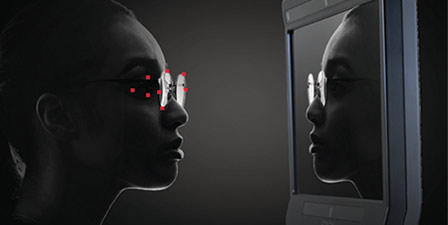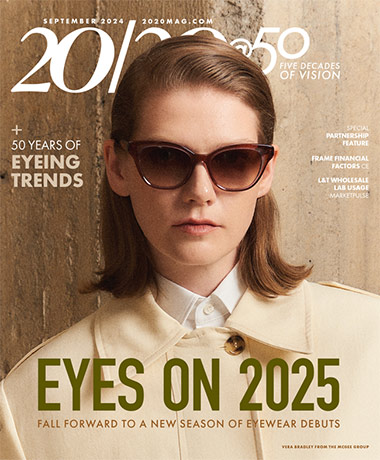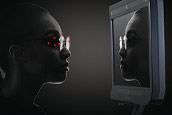By Linda Conlin, ABOC, NCLEC
Glass, CR-39, Polycarbonate, Hi-Index, Trivex—ECPs have all of these choices when recommending a lens material and often base their recommendation on the power of the prescription. But what do patients want? Do they want a specific material, or are they actually asking for a particular feature or benefit? The ECP must provide the guidance in selecting a material that works best for both vision and patient expectations.
According to a survey of 500 U.S. adult eyeglass wearers with dependent children conducted by PPG Industries, while consumers are interested in lenses that provide a combination of features, they are unfamiliar with their choices. Results suggested that patients would benefit from further education on the part of their eyecare professional, as 90 percent of survey respondents reported a tendency to defer to an ECP’s recommendation when selecting a lens material. The research indicated a general lack of awareness about lens material and there was little awareness about newer materials. However, the research also showed that consumers expect a lot from their lenses, with 71 percent saying it is important to them that their spectacles are made with the most advanced lens technology. In prioritizing the most important attributes of a spectacle lens, responses showed that clearest vision ranked highest. Considering patients’ need for education and trust in their ECPs, the ball is in our court!
Let’s take a closer look at lens material options.
•Glass is the most scratch resistant lens material with a high Abbe value that provides clear peripheral vision in high powers. On the downside, it’s the heaviest material, has the poorest UV absorption, is less impact resistant and has limited availability when compared with other materials.

•CR-39 is lighter and more impact resistant than glass. It’s the standard by which we compare lens thinness and lightness. With a high Abbe value, it provides clear peripheral vision in high powers, can be UV treated for 100 percent protection and is available with scratch-resistant coatings making it comparable to glass. However, it is thicker than other materials.
•Polycarbonate is 25 percent thinner and lighter than CR-39, and offers 100 percent UV protection without treatment. It can be drilled and is 30 times more impact resistant than CR-39, making it recommended for safety, sports and children’s eyewear. Caveats are that it can result in star cracks when drilled, and some patients report “poly non-adapt,” usually due to chromatic aberrations.
•Hi-Index lenses range from 1.6 to 1.74, Ultra Hi-Index. At up to 50 percent thinner than CR-39, they are the thinnest lenses available. They offer 100 percent UV protection and are made with scratch resistant coatings. The refractive index influences the Abbe value (chromatic dispersion) and reflectivity of a lens, so choosing a Hi-Index material with a higher Abbe value will improve the optical performance for better peripheral vision, as will the addition of a premium AR coating. Not all Hi-Index materials are created equal, though. For example, the high impact and reduced notch sensitivity or tensile strength of Mitsui MR Hi-Index makes it perfect for rimless and drill. (See the Materials Comparison chart.) However, Hi-Index is not recommended for sports, children’s or safety glasses.
•Trivex is a mid-index material that works well with drilled rimless frames and provides 100 percent UV protection. Trivex is suitable for children’s and safety glasses because of its impact resistance, and its higher Abbe value provides sharper peripheral vision with less chromatic aberration as compared to polycarbonate. While it is 25 percent thinner and lighter than CR-39, it is not as thin as higher index materials.
When choosing a lens material for a patient, of course the ECP must take the patient’s lifestyle into account, as well as the prescription. In addition to activities, consider that patients want the best for appearance, durability and convenience. For children, sports and safety, polycarbonate or Trivex are certainly the go-to options. For others, remember that patients purchase benefits, not index or Abbe values. Avoid discussing numbers, but rather present features and benefits the patient expects from their eyewear. Show them the difference in materials using lens samples in frames, or charts that show lens thinness by Rx.
Eyecare professionals are in a powerful position to use their unique relationship with patients to explain the benefits of lens materials for clearer vision, durability and protection that spectacle wearers want, even over price. Research and technology could produce more great material choices in the foreseeable future. Stay informed and make sure patients know you are offering them the best.












